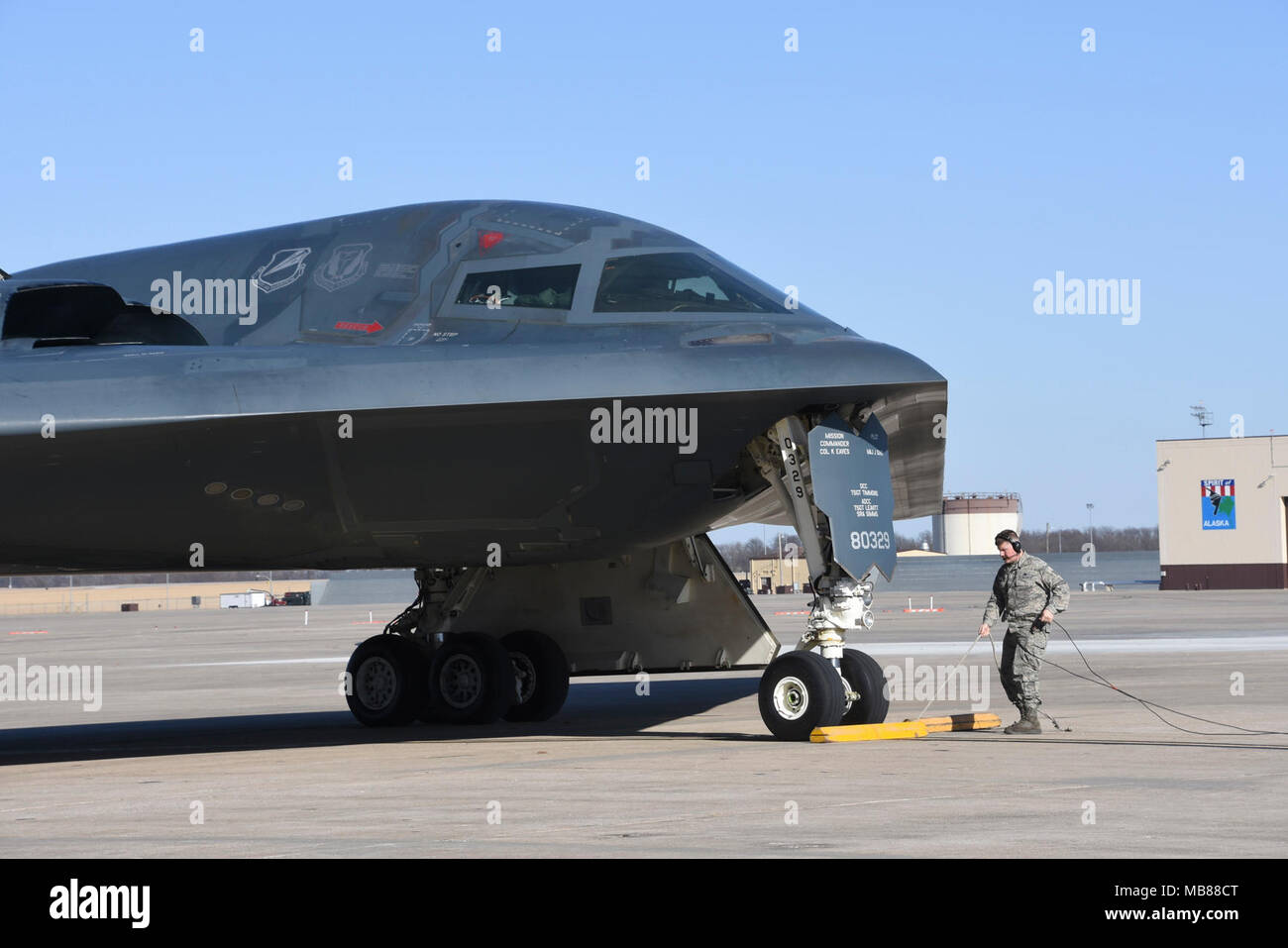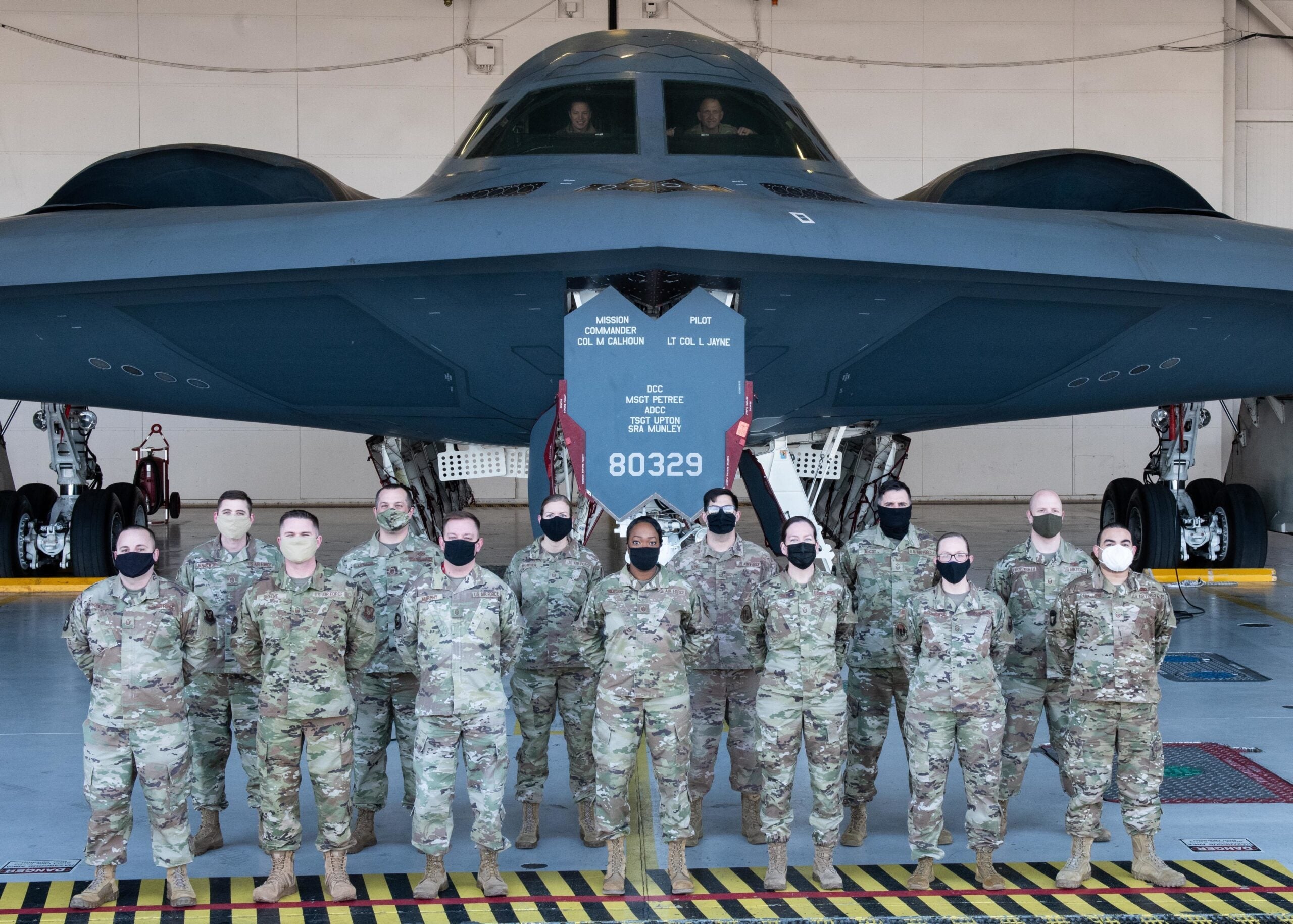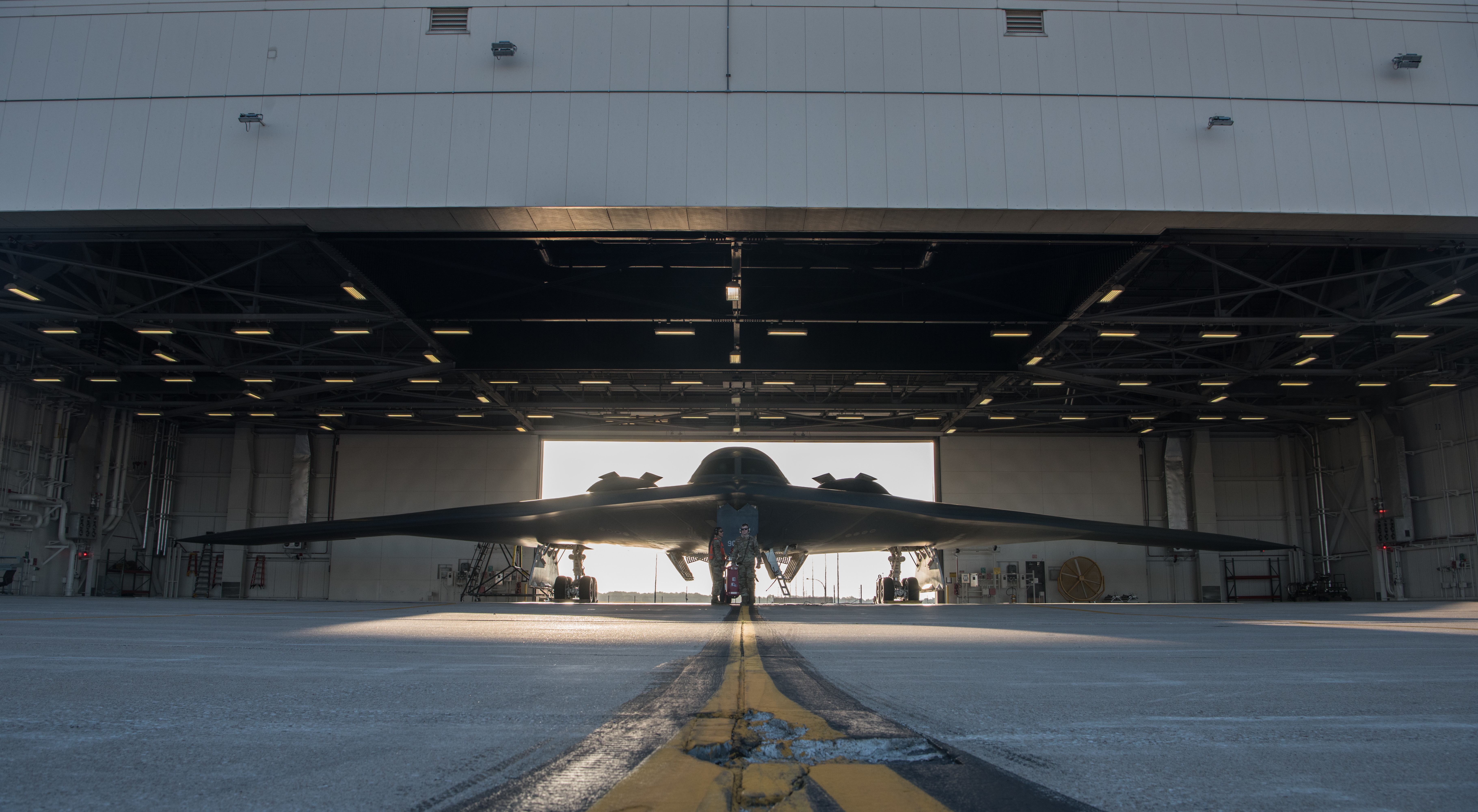Missouri Air Force Bases - Sixty miles southeast of Kansas City, nestled among the wooded, rolling hills of west-central Missouri and 10 miles east of Warrensburg is the bustling community of Whiteman Air Force Base. Today, Whiteman is home to the Air Force's primary weapons system, the 509th Bomb Wing, which operates and maintains the B-2 stealth bomber.
Whiteman's proud heritage dates back to 1942, when USAF officials selected the site of the current base as the base for Sedalia Army Air Field (a neighboring community of Sedalia, 20 miles east of the base) and WACO glider training facility. pilots.
Missouri Air Force Bases

Airmen from one unit trained at the base, the 314th Airlift Group, participated in the D-Day invasion of Sicily in July 1943 and Normandy on June 6, 1944.
File:sound Of Speed Air Show Performs For Community Above Missouri (29532757776).jpg
After the war, the airfield served as an operating base for the Air Force's C-46 and C-47 vehicles. The base was decommissioned in December 1947, but with the birth of the US Air Force as a separate, independent service and the subsequent creation of the Air Force Command (SAC), the site of the former airfield was considered for other projects. For example, in the late 1940s it was considered as a possible site for the US Air Force Academy's "Air West Point".
The history of the 351st Airlift Wing at Whiteman began in April 1961, when test wells in the area surrounding the base revealed that the geological structure supports a land-based ICBM system. Three months later, DOD announced plans to base Wing IV's Minuteman ICMB system at Whiteman. In April 1962, a groundbreaking ceremony was held at the site now known as Oscar-01, with the participation of many dignitaries. The 351st Airlift Wing was activated on 1 February 1963 to control construction and operate as a base operations unit. Remarkably, it took only two years, two months and two weeks to build and equip 150 missile bases and 15 launch control centers. On June 29, 1964, the 351st went to full alert. 165 individual sites (15 command posts and 150 launch sites) were scattered throughout Missouri. All sites had to be separated by at least three nautical miles, resulting in a missile zone covering an area of more than 10,000 square miles. A hardened intermediate cable system consisting of more than 1,770 miles of buried cable connected these facilities.
The Oskar-01 missile control facility for the 510th Airlift Wing was programmed for an area southeast of the base, but the water level associated with Lake of the Ozarks made construction there impossible. Instead, the AF located the facility at Whiteman AFB, the only ICMB missile launch command center located on a base anywhere in the world.
The end of the Cold War marked the end of the 351st SMW and the shutdown of the Minuteman system. On January 8, 1993, the wing's first launch control center shut down, and on May 18, 1995, the last Minuteman missile was launched from its launch pad. However, protection of Oscar-01 was assigned to the 509th Bomb Wing. It has been preserved as a museum dedicated to the thousands of men and women who supported ICBM forces during the Cold War. Public tours can be arranged.
B 2 Conducts Mission In Indo Pacific, Integrates With Us, Royal Australian Air Force Fighters
The 509th Bomb Wing traces its historical roots to its World War II ancestor, the 509th Composite Group, which was formed with one mission: to drop the atomic bomb. The group made history on August 6, 1945, when a B-29 Enola Gay dropped the first atomic bomb on Hiroshima, Japan. On August 9, 1945, the group again dropped an atomic bomb on Nagasaki. Within a month, the Japanese signed surrender terms aboard the USS Missouri.
In late 1945, the group was stationed at Roswell Air Force Base in New Mexico; Twelve years later, the 509th moved to Peace AFB in New Hampshire. SAC decided in 1965 to equip the 509 BW with the B-52 and KC-135. On 30 September 1990, the wing was assigned to Whiteman AFB. December 17, 1993 marks ninety years since Orville Wright's first historically successful manned flight in Kitty Hawk, North Carolina, of the world's most advanced and advanced aircraft, the B-2 Advanced Technology bomber, the Spirit of Missouri. . , arrived at Whiteman Air Force Base.
The AH-64 Apache is the military's heavy division/army attack helicopter. Performs rear, block and shaping tasks, including a deep accurate strike. Conducts discrete operations, precision strikes against mobile targets, and provides armed reconnaissance as needed during day, night, covert combat, and adverse weather conditions. The aircraft's combination of radar, advanced navigation and avionics suite provides situational awareness, lethality and survivability.

In August 1951, SAC selected Sedalia AFB as one of its new bomber wings, the first jet bomber, the B-47 Stratojet, and the KC-97 refueling tanker were assigned to the unit. Construction of the facility was conducted by the 4224th Air Base Squadron until 20 October 1952, when the base was transferred to the 340th Bombardment Wing. The first B-47s arrived on March 25, 1954, and by the end of the following month, 18 bombers were assigned to the wing.
Walker Air Force Base
On October 12, 1954, the first KS-97 arrived. On August 24, 1955, to Mrs. Early Whiteman of Sedalia, Sedalia Air Force Base, her son, 2nd Lt. George A. It was announced that it would be renamed Whiteman Air Force Base in honor of Whiteman. Whiteman was one of the first airmen to die in the attack on Pearl Harbor on December 7, 1941. A dedication and renaming ceremony took place on December 3, 1955.
The B-2 first saw combat on March 23, 1999, during Allied military operations in Serbia and Kosovo, the first sustained combat airstrike conducted solely from US soil. Although the B-2 aircraft accounted for only 1% of all NATO missions, the aircraft's all-weather accuracy enabled it to deliver 11% of the munitions used in the air strike.
In October 2001, the B-2 bomber led the US strike in Afghanistan, striking the first target to "knock on the door" for the country's Operation Enduring Freedom. Combat missions lasted more than 40 hours, with the aircraft operating continuously for more than 70 hours before returning to Whiteman.
On March 21, 2003, the famous "shock and awe" campaign of Operation Iraqi Freedom began with the unprecedented use of precision-guided munitions by the B-2. The campaign also marked the first time that B-2 aircraft flew combat missions simultaneously from both Whiteman AFB and a forward location.
Whiteman Air Force Base Hi Res Stock Photography And Images
In 2008, Whiteman AFB welcomed the Missouri Air National Guard's 131st Bomb Wing as a B-2 partner. In this service, Missouri's civilian pilots work alongside active-duty military personnel to maintain and fly the nation's most advanced bomber aircraft.
The 442nd Fighter Wing consists of approximately 1,800 members at Whiteman Air Force Base and two geographically separate units; 917th Fighter Group, Barksdale Air Force Base, and 476th Fighter Group, Moody Air Force Base, Ga. Wing 48 A-10 Thunderbolt II is responsible for the combat readiness of all A-10 aircraft. Air Force Reserve. The 442nd moved from Richards-Gebauer Air Force Base to Whiteman, Kansas City, Mo. in June 1994.
The A-10 Thunderbolt II is a single-seat fighter aircraft designed to provide close air support to ground forces by attacking tanks and other armored vehicles. The A-10 was designed around the GAU-8 Avenuenger, a heavy rotary cannon that formed the aircraft's primary armament. The cannon is capable of firing 3900 rounds per minute. The A-10's propeller contains more than 1,200 pounds of armor, and survivability is a priority, with protective measures designed to allow the aircraft to continue flying even after significant damage.
The A-10 can also use conventional munitions, including conventional bombs, cluster bombs, laser-guided bombs, Joint Direct Attack Munitions (JDAM), and AGM-65 Maverick and AIM-9 Sidewinder missiles. The 442nd participated in the Berlin Crisis, Cold War, Desert Storm, and No-Air Command, Southern Command, Enduring Freedom, and Iraqi Freedom.
Every Air Force Base In The United States
The 1-135th Assault Aviation Battalion's mission is to conduct assault, reconnaissance and security operations that complement other squadrons. They operate 13 AH-64D Apache Longbow helicopters. The Missouri National Guard is the only part of the military with two missions. Our federal mission is to provide federal support when the president calls for it—whether it's for an overseas emergency or a federal emergency like Hurricane Katrina. Our statewide mission is to support Missouri governors in times of crisis. Welcome to Whiteman Air Force Base, located in central Missouri and home to the 509th Bomb Wing. The base is believed to be one of the first soldiers to die in World War II, George A. Named for Whiteman. The military base began its history in 1942 as a glider base. After World War II, the base became home to bombers and during the Cold War
Air force reserve bases, air force bases, abandoned air force bases, air force bases alaska, air force bases in missouri, air force bases locations, air force guard bases, air force bases map, us air force bases, air force military bases, air force tacp bases, closed air force bases


0 Comments